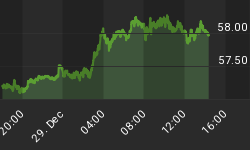The following is excerpted from a commentary originally posted at www.speculative-investor.com on 22nd September 2013.
In our 18th September Update we said that the Fed's decision not to "taper" was not, in and of itself, meaningfully bullish for gold. The economic effects of $85B/month of asset monetisation are not materially different from the economic effects of $70B/month of asset monetisation. They both constitute ultra-easy monetary policy, and in any case the investment/speculative demand for gold is boosted by the negative effects of monetary inflation rather than the monetary inflation itself. The fact that the Fed chose not to scale back its money-pumping program at this time could, however, be fundamentally bullish for gold if it reflects inside knowledge on the part of the Fed about problems in the banking industry and/or results in a sustained reduction in Fed credibility (as neatly put by Jim Grant, gold's value is the reciprocal of confidence in the central bank).
The link between the gold market and the perceived health of the banking industry is illustrated by the following chart comparison of gold and the BKX/SPX ratio (bank stocks relative to the broad stock market). The chart reveals a tendency over the past three years for gold to trend in the opposite direction to the BKX/SPX ratio on an intermediate-term basis, meaning, for instance, that gold has tended to strengthen during 6-12 month periods when bank stocks have been weakening relative to the broad stock market. The chart also reveals that there can be significant short-term deviations from the aforementioned intermediate-term relationship.

We've mentioned in previous commentaries that it is very difficult to apply the relationship between gold and the BKX/SPX ratio as a real-time indicator of a trend change. The reason is that when one or the other of these entities changes course there will be no way of knowing at the time whether the course change is a short-term correction to a continuing intermediate-term trend or an intermediate-term trend reversal. For example, the decline in the BKX/SPX ratio during the second quarter of 2012 was large enough to be the first downward leg in a new intermediate-term decline, but it turned out to be nothing more than a correction to a continuing intermediate-term advance.
Having said that, a reversal in gold stands a much better chance of having intermediate-term significance if it is confirmed by a reversal in the BKX/SPX ratio, and a reversal in the BKX/SPX ratio stands a much better chance of having intermediate-term significance if it is confirmed by a reversal in the gold market. To put it more succinctly, short-term reversals in gold and BKX/SPX are more likely to have intermediate-term significance if they confirm each other. For example, the fact that the BKX/SPX decline during Q2-2012 was not confirmed by a gold rally was a clear sign that it was a short-term correction rather than an intermediate-term trend change, and the fact that the gold rally during Q3-2012 was not confirmed by a BKX/SPX decline was a clear sign that it was a short-term correction rather than an intermediate-term trend change.
The interesting thing right now is that gold's rebound from its late-June low has coincided with a decline in the BKX/SPX ratio. In other words, the relationship between gold and the banking sector's relative strength suggests that an intermediate-term trend change happened during June-July.
The upshot is that while gold investors should be financially and emotionally prepared for gold to test its June low within the coming 1-2 months, a price decline of that magnitude is probably not going to happen.
We aren't offering a free trial subscription at this time, but free samples of our work (excerpts from our regular commentaries) can be viewed at: http://www.speculative-investor.com/new/freesamples.html
















